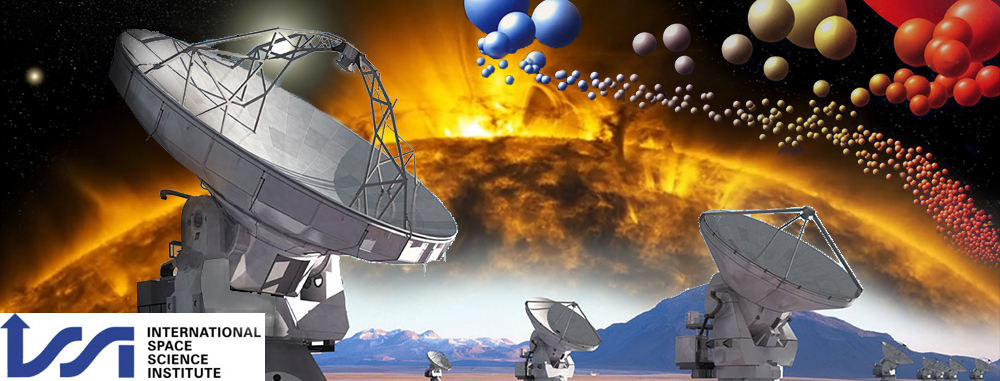The Atacama Large Millimeter/submillimeter Array (ALMA) achieves high spatial, temporal, and spectral resolution, which makes this new facility a true leap forward for observations at (sub-)millimeter wavelengths (0.3 – 8.6 mm). Although it only recently commenced operation, this antenna array in the Chilean Andes has already produced interesting results for a wide range of topics in astrophysics, including observations of α Centauri, the nearest stellar system to us. Regular observations of the Sun begin in December 2016, and the much interesting data obtained during prior solar test campaigns will shortly be released. These test observations have already demonstrated ALMA’s great
potential for observations of the Sun.
The spatial resolution of solar observations with ALMA comes close to what current optical solar telescopes achieve, thus unlocking major diagnostic advantages of the mm wavelength range. First of all, the solar radiation at a given mm wavelength serves as an essentially linear measure of the local gas temperature in a rather thin layer in the solar chromosphere. Secondly, the formation height increases with wavelength so that different heights in the chromosphere can be probed by changing the observed wavelength, thus facilitating measurements of the 3D thermal structure. In addition, ALMA’s polarisation measurements allow for reconstructing the 3D magnetic field, while recombination and molecular lines (e.g., CO) will provide complementary diagnostic tools for the thermal, kinetic and magnetic plasma state in the chromosphere. Consequently, ALMA now offers access to direct indicators for stellar activity, which are much easier to interpret than commonly used indicators like Hα, Ca II or Mg II lines. The same tools can be applied to observations of stars, although – in contrast to the Sun – their disks cannot be spatially resolved.
ALMA’s impressive capabilities enable us now to
- reevaluate stellar activity by means of a comparative solar-stellar study
- characterise the (average) thermal structure of stellar chromospheres.
We intend to use simultaneous observations with ALMA and space-borne observatories for the Sun and a moderate sample of other stars. Measurements of mm-radiation-based activity indicators (ALMA) will be compared systematically to “classical” indicators from space-borne telescopes (e.g., for the Sun: IRIS, SDO; for stars: HST, Chandra). Some common IRIS and ALMA data already exist in the test series. The interpretation of the observations will be supported by state-of-the-art numerical simulations of the solar atmosphere and corresponding synthetic observables, which can be evaluated in their spatially resolved form for solar observations and (after integrating over a stellar disk) in spatially unresolved form for stellar observations.
The key scientific objective is to advance our understanding of the solar/stellar connection with particular focus on solar/stellar activity and with implications for stars in general, including stellar magnetism and dynamos and the role of host stars for extra-solar planets.
